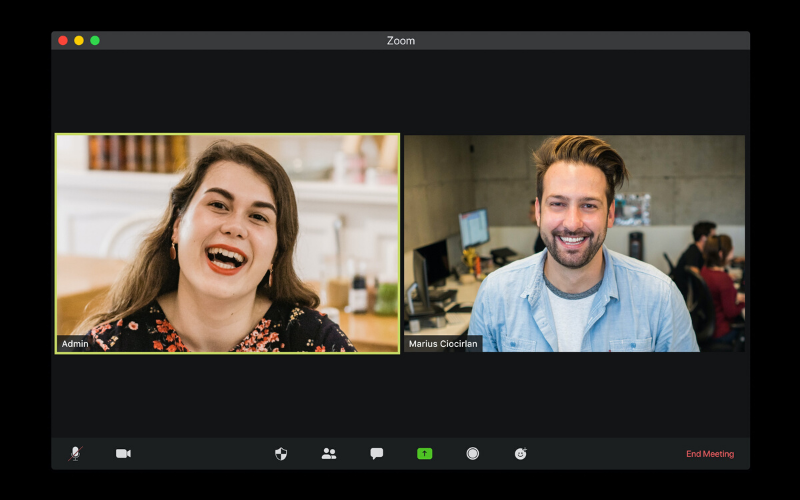
As soon as you have a new product idea that you think is worth pursuing you need to workout whether the problem you plan to solve is worth solving. Early Customer Interviews are one of the best and fastest first steps to figuring out whether your new idea will succeed.
Early Customer Interviews focus on uncovering information on how your (proposed) customer thinks about the problem you are thinking about solving.
They are a straightforward, low cost activity for opening up a conversation to learn from your customers about whether your new product idea is going to work.
Early Customer Interviews take place as early in the product lifecycle as possible. They are usually done immediately after you have an idea you think is worth pursuing. Make them one of your first activities.
They are called Early Customer Interviews because the interviews you do in the early stages of a product idea need to be conducted in a certain way to get the most out of them. They’re characterised by a focus on understanding the nature of the problem you’re interested in solving.
If done right, they’ll provide you with qualitative feedback direct from the most important stakeholder you have (hint: your customer). They’ll provide you with data to help inform your more quantitative research but also to help shape your thinking.
I’ll highlight the benefits further with an example. As part of exploration for a new product in the property industry we have a team interviewing tenants and property managers. The early interviews with 10 of these people have highlighted a clear gap on the importance of some interactions between the two customer types. Importantly, the interviews provided real data to work from instead of basing decisions and next steps of people in the room’s opinion.
What is an Early Customer Interview?
Early Customer Interviews are a unique type of interview. They’re conducted in the context of an idea for a product or feature that is in its early stages where one of the largest – if not the largest – risks is that customers don’t care or won’t use your product.
The risk customer’s don’t care is essentially the defining factor of Early Customer Interviews. Early Customer Interviews focus on understanding what your customer cares about and their behaviour above all else.
In Early Customer Interviews you need to uncover:
- What people actually do in relation to the problem you’re trying to solve.
- Whether your problem domain and problem even matters to your proposed customer.
- Where people allocate their time/resources generally and in relation to your problem
- How much your problem matters
- Factors and constraints surrounding your problem (hints at how it might need to be solved)
- How they describe the problem in their own words (not yours!)
- How they measure your problem and success at solving/managing it
- (maybe) How people currently address the problem you propose to solve
You’ll notice that at no point are you asking them about your solution specifically. In the interview you may not even get to how they currently address the problem you are interested in and that’s ok (it might be a sign).
For those that like solutions, defining features and building things these interviews can feel a bit jarring. Avoid discussing your precious solution. Don’t do it. Be patient. It’s worth it.
How to run Early Customer Interviews
The key steps to running Early Customer Interviews are:
- Prepare
- Write the Interview Script
- Find Interview Candidates
- Arrange Interviews
- Conduct Interviews
- Analyse Interview Results
Step 1: Prepare
Before you start interviewing you need to do some preparation.
Some of the most essential tasks in preparing for interviews are:
- Make sure you understand as much as you can about the type of person you need to interview. Be aware of the difference between early adopters versus laggards. This helps select interview candidates.
- Make a hypothesis about their behaviours (how they spend their time, what they do, what they prioritise). This helps uncover hidden behaviour. We often use Jobs-to-be-Done to help here.
- List your key assumptions about the customer and your possible solution(s).
- Planning your target interview length as well as a possible incentive to engage people (like a $50 Amazon gift card).
- Determine whether to include some pre-reading for them to assess (not always a good idea, but sometimes useful)
With all your preparation, especially hypotheses about how people behave, just make sure you weakly hold them. Your bias here after forming a hypothesis may cloud your ability to interview well.
You may need to abort your interviews if you don’t have enough clarity in preparation. Then again, interviews may bring clarity.
Step 2: Write the Script
Now you’re ready to prepare your interview script.
You need to script the interview to ensure your questions are asked in the right way, about the right things. Some level of consistency across interviews also allows for comparisons across interviews. That being said, you need to be open to deviations and use the time to dig into the topics that emerge. You also need to build rapport.
At a high level the structure you want to follow is simply:
- Introduction (yes, script it) – who you are, what the purpose is
- 5-7 key questions
- Thank them (don’t forget this!)
In designing the questions, some considerations are:
- Script open ended questions
- Mix quantitative with qualitative.
- Quantitative: “How many times in the past week did you do X activity?”. “How much do you spend on X problem?” “How much does X cost you?”
- Qualitative: “What are your top problems?” “Why is X a problem?” “What is the hardest part of problem X?”
- Start with an outline of the key, high level questions you want to answer then elaborate on these. Allow some nesting of questions as this follows how conversations can expand on a topic.
- Prioritise the questions based on the magnitude of the assumptions they address. You may not get to ask everything.
- Be careful asking questions about opinions or the future, ask about history. That is, ask about what has actually happened. This is a somewhat more reliable predictor of what will happen in the future.
Pro-tip: Try to avoid “on a scale of 1-10” type questions at this stage. When I broke an ankle that required surgery the doctors didn’t give me much in the way of pain killers because I kept saying 7/10. I found this out afterwards and would have asked for more painkillers had I known they were withholding. I needed it.

Step 3: Find Interview Candidates
Now that you know who you are interviewing and what you want to ask you need to find some people to interview.
There are so many ways to find candidates. The broad ways you can do it are listed below in order of speed/ease with the fastest and easiest first:
- People in you and your team’s network
- Existing customers
- Social media (e.g. Facebook, Twitter or LinkedIn searches)
- Paid services that arrange interviews such as User Interviews or Respondent.
The amount of interviews you need to do can vary. A good rule of thumb is to keep conducting interviews until you feel like you are net getting any further insights from the people you are speaking to. Basically, it will sound like you have had each conversation before. This means you have explored in depth the problem space surrounding your idea.
Step 4: Arrange Interviews
Once you have some candidates for interviews you will need to go back and forth to find a time that works for them.
This isn’t a complicated step but it’s explicitly called out here because it takes time.
Step 5: Conduct Interviews
Now we arrive at the interview itself.
Some pointers:
- Build rapport – be a human, not a robot checking questions off a list
- Explore with follow up questions – a great way to do this is, in response to an answer, ask “why” a few times or say “could you tell me a bit more about that?”
- It’s ok to deviate from the script, allowing someone to lead you a bit will help you uncover things you weren’t aware of.
- Be aware of your bias creeping into conversations.
- DON’T MENTION YOUR SOLUTION
- Take notes
- Use a transcription and recording service if possible
- At the end of the interview, do tell them you are working on a solution in their specific problem space. Ask if they would be open to speaking with you further once you are further along in the process. This means you can quickly conduct more research or product testing in the future.
Step 6: Analyse Interview Results
Once you’ve completed one or more interviews you want to try to summarise the interviews in a way that makes them comparable.
Then you can start to pull out the key insights you’ve gained.
With your key insights on hand you can re-evaluate your assumptions as well as your understanding of your customer’s behaviour and problems. This should lead to some re-evaluation of your proposed solution.
Bonus Thoughts
Here are a few thoughts that will help with your Early Customer Interviews:
- Practice. The more you interview, the better you become
- Don’t be afraid to start interviewing. Some information is better than none. You’ll quickly and cheaply learn if your script is no good. Don’t get stuck analysing or over thinking your script.
- There are some tools that can help with this process like: otter.ai, dovetail, Zoom/Google Hangouts recording feature. Don’t get caught up in tooling though, a pen and notepad is all you really need.

Scott Middleton
CEO & Founder
Scott has been involved in the launch and growth of 61+ products and has published over 120 articles and videos that have been viewed over 120,000 times. Terem’s product development and strategy arm, builds and takes clients tech products to market, while the joint venture arm focuses on building tech spinouts in partnership with market leaders.
Twitter: @scottmiddleton
LinkedIn: linkedin.com/in/scottmiddleton